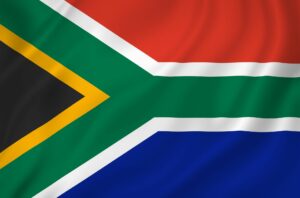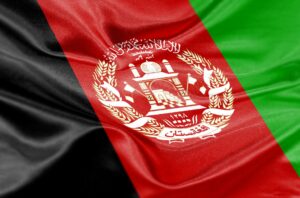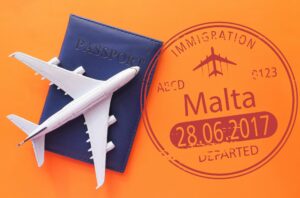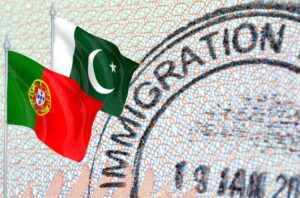Imagine you’re living in a paradise with 365 beaches, stunning landscapes, and rich cultural heritage. Welcome to Antigua and Barbuda!
We are going to run you through the cost of living in Antigua and Barbuda covering things like housing, food, transportation, healthcare, and even real estate investment in these beautiful islands.
Antigua and Barbuda might seem a bit pricey compared to some Caribbean destinations, but there are ways to navigate this. Stick around to learn more about how to make this paradise an affordable home for you. We’re here to help you turn dreams into reality!
Overview of the Cost of Living in Antigua and Barbuda
Antigua and Barbuda is a popular travel spot known for its 365 beaches. But, the cost of living can hit hard if you’re not ready. The local currency is the East Caribbean Dollar (EC$), but US Dollars are also widely accepted.
You should know that most ATMs only give out the local currency. So, getting to know the exchange rate (EC$ 2.7=USD $1) is essential.
Housing Costs in Antigua and Barbuda
Housing is a significant factor when considering the cost of living in Antigua and Barbuda. Despite being higher than most Caribbean countries, it’s still about 20% cheaper than in the US and the UK.
Renting Property
Renting property in Antigua and Barbuda is relatively affordable. You’d pay around USD $1,000 per month for a one-bedroom apartment in the city center. The same apartment outside the city center would be about USD $740.
If you’re looking for more space, a three-bedroom apartment in the city center will cost you approximately USD $1,850. The cost drops to around USD $1,200 if the apartment is located outside the city center.
Cost of Housing
The average cost of housing in Antigua and Barbuda varies greatly. It depends on the type of property and its location. Property prices range between USD $255,000 and USD $12,000,000, with options ranging from historic colonial houses to luxury beachfront villas.
For example, you might pay around USD $250,000 for a spacious one-bedroom apartment. On the other hand, a 22-acre private island in sheltered crystal clear blue waters could set you back around USD $1,500,000.
Buying Property
If you’re a foreigner purchasing real estate in Antigua and Barbuda, you must obtain an Alien Landholding License. This is charged at a minimum of five percent of the property’s value. The process of obtaining the license can be costly and time-consuming, taking between three and six months to complete.
As a property owner, you’re also required to pay property tax. This is normally a regulated cost depending on the market price point, and rates vary from 0.1 percent to 0.5 percent, depending on the property value and use. Owners who are not residents of undeveloped land must pay a land tax of 10 percent to 20 percent on the value of the land, depending on how long they’ve owned the plot. If you are a non-resident and you want to lease out properties on the island, you are subject to a 25 percent tax rate of the net rental income.

Transport and Healthcare Costs in Antigua and Barbuda
Transport Costs
Getting around in Antigua and Barbuda is reasonably priced. A temporary driving license, valid for three months, costs a mere USD $20. However, acquiring license plates for your vehicle involves a multi-step process, including vehicle registration, proof of insurance, and handling customs paperwork for newly imported cars.
Healthcare Costs
The healthcare system in Antigua and Barbuda is robust, with 3 percent of the nation’s GDP allocated to it, ensuring residents have access to top-notch medical services.
The primary medical facility is The Mount St. John’s Medical Center, a leading Caribbean provider that meets international standards. This 185-bed teaching hospital is recognized as the most modern among the Caribbean islands and is accredited by the Caribbean Medical Council Association.
Healthcare services extend beyond the main hospital, with a network of 26 community health facilities, one public hospital in Antigua, and an 8-bed medical facility in Barbuda. The country is divided into six medical districts for healthcare purposes, ensuring medical services are accessible to all residents.
The government also offers free medication, medical services, and supplies for chronic non-communicable diseases such as chronic respiratory disease, diabetes, cardiovascular diseases, and cancer through the Medical Benefits Scheme. The country also has a National Drug Formulary as part of the public healthcare system, offering 380 different types of drugs.
Pharmacies are abundant, particularly in St. John’s, which has the opening hours of 9 AM to 5 PM from Monday to Saturday.. For 24-hour services, Ceco Pharmacy provides full prescription services and is open every day from 8:15 AM to midnight.
Healthcare spending has seen fluctuations over the years. In 2019, it was USD $760, a 5.99% drop from 2018. However, in 2018, it was USD $809, a 7.82% increase from 2017. In 2017, it was USD $750, a 3.65% drop from 2016, and in 2016, it was USD $778, a 3.21% increase from 2015.
The government’s commitment to the health and well-being of its residents is evident through strong leadership, good governance, service provision, sufficient and sustainable financing, and public-private partnerships. This commitment is reflected in the quality and accessibility of healthcare services in the country.

Real Estate Investment in Antigua and Barbuda
The real estate market in Antigua and Barbuda offers attractive opportunities for investors, buoyed by the nation’s appealing lifestyle, secure investment climate, and picturesque landscapes. The country has become increasingly popular among foreign buyers, thanks to its political and social stability and a business-friendly environment.
Launched in 2012, the Antigua and Barbuda Citizenship by Investment Program adds an extra dimension to the investment appeal. This initiative allows foreign investors to acquire citizenship, usually within three to four months, by making a qualifying investment in the country. One eligible investment route under this program is real estate, where investors can purchase property valued at a minimum of USD $200,000 from approved development projects. The investment must be maintained for at least five years.
Foreign nationals can freely invest in Antigua and Barbuda’s real estate without needing a non-citizen’s landholding license, particularly if they apply for citizenship through the investment program. Investors have the flexibility to purchase multiple properties on the islands.
However, it’s important to consider the transaction costs involved in property purchases. These include the Alien Landholding License fee, stamp duty, legal fees, and insurance against risks. Professional services such as real estate agents, attorneys, or accountants during the purchase will incur additional commission fees. If financing the property through a loan in Antigua and Barbuda, a 3% government tax is applicable.
Upon selling the property, investors should anticipate a seven percent stamp duty fee, two to three percent in legal fees, and a five percent appreciation tax. The real estate sector, with its variety of options ranging from independent to luxury hotels, has notably attracted many American buyers, presenting a wide array of investment opportunities.

Cost of Food in Antigua and Barbuda
In Antigua and Barbuda, the cost of food can vary, but certain trends and average prices offer insight into the typical expenses one might encounter. The island’s reliance on imported goods generally results in higher grocery prices compared to larger countries. Here are some indicative costs:
- Groceries:
- A liter of milk can cost around $2.50 to $3.
- A loaf of bread is typically priced between $2 and $3.
- Local fruits and vegetables are more affordable, with prices ranging from $1 to $3 per item or per pound, depending on the season and availability.
- Imported meats and cheeses can be more expensive, often exceeding $10 per pound.
- Dining Out:
- A meal at an inexpensive restaurant might cost between $10 and $20.
- For a three-course meal at a mid-range restaurant, prices can range from $25 to $50 per person.
- Fine dining experiences, especially in tourist areas or luxury resorts, can exceed $100 per person.
- Local Markets:
- Shopping at local markets can offer lower prices for fresh produce, with seasonal fruits and vegetables available at competitive rates.
- Overall Budget:
- For a standard grocery shopping trip, one might expect to spend around $50 to $100 per week, depending on dietary habits and preferences for local versus imported goods.
These prices are indicative and can fluctuate based on factors like location within the islands, current economic conditions, and seasonal changes. Visitors and residents looking to manage their food budget effectively in Antigua and Barbuda might consider a combination of dining options and shopping choices, balancing meals at home with the diverse culinary experiences offered by local eateries and restaurants.
Wrapping Up on Living Cost of Living in Antigua
Living in Antigua and Barbuda presents a unique blend of Caribbean charm and high living standards. Although higher than the Caribbean average, the cost of living offers value when considering the quality of life, safety, stunning landscapes, and robust healthcare system.
By planning smartly and making use of locally available resources, you can manage expenses effectively, from accommodation to food to various activities.
Investment prospects, particularly in real estate, provide an additional incentive for long-term stayers or those looking to secure a second home in a tranquil tropical setting. It’s all about understanding your needs and financial situation and aligning them with what Antigua and Barbuda offers. Hopefully, this guide offers you a comprehensive insight into making that decision.
FAQ
What is the Cost of a Hotel?
Prices for a double room in a budget hotel in Antigua start at about USD $140-180 per night.
What’s the Difference Between the Costs of Living in Antigua and Barbuda Compared to the Caribbean?
Living in Antigua and Barbuda costs more than the Caribbean average for a few reasons. The country’s popularity as a travel spot, especially for its beaches, drives up the demand for accommodation, which in turn pushes up prices. The cost of food is also high, especially in areas along the shoreline where tourists flock.
Will I Save Money Living in Antigua & Barbuda?
Despite the high cost of living in Antigua and Barbuda, there are ways you can save money. For instance, planning your trip during off-peak seasons like May or June can help you find cheaper accommodation. Also, think about having daily picnics and bringing your own snorkel gear to cut down on food and activity costs.
If you’re okay with skipping organized activities and tours, you can enjoy Antigua for around USD $100 per day. But, if you’d like a more comfortable stay with meals in upscale restaurants, occasional drinks, and a few arranged activities, you should be prepared to spend at least USD $250 per day.
Is it Expensive to Rent Property in Antigua and Barbuda?
While the cost of rent may seem high, it’s relative to the overall cost of living. Compared to the US and UK, the cost of rent in Antigua and Barbuda is quite reasonable.
However, utilities such as electricity, heating, cooling, water, and garbage are about the same price as in Europe or the US.





